DALE EARNHARDT: On the 71st anniversary of his birth, 71 memories of the Intimidator
- Oops!Something went wrong.Please try again later.
Seventy-one years ago today — on April 29, 1951 — Dale Earnhardt was born in Kannapolis, N.C.
He was the son of a racer, and spent his formative years surrounded by racers and race cars. From an early age, he made it his destiny to become a racer, and given the nearby world of his youth, it was only natural.
But no one could've foreseen the racer he would become. The 76 career Cup Series wins and seven championships are a big part of the story, of course, but if those numbers could be dwarfed, they're dwarfed by the hold Dale Earnhardt had on the sport of stock-car racing.
He was, without question, "The Man," and today, on the 71st anniversary of his birth, we recount 71 bits of trivia, numbers and randomness.
DALE'S DESTINY: From Kannapolis to Daytona to Talladega and beyond.
THAT TRAGIC DAY: The unthinkable struck on final lap of the 2001 Daytona 500
INSIDE DALE'S FINAL RACE: An inside look at the Fox broadcast of the 2001 Daytona 500
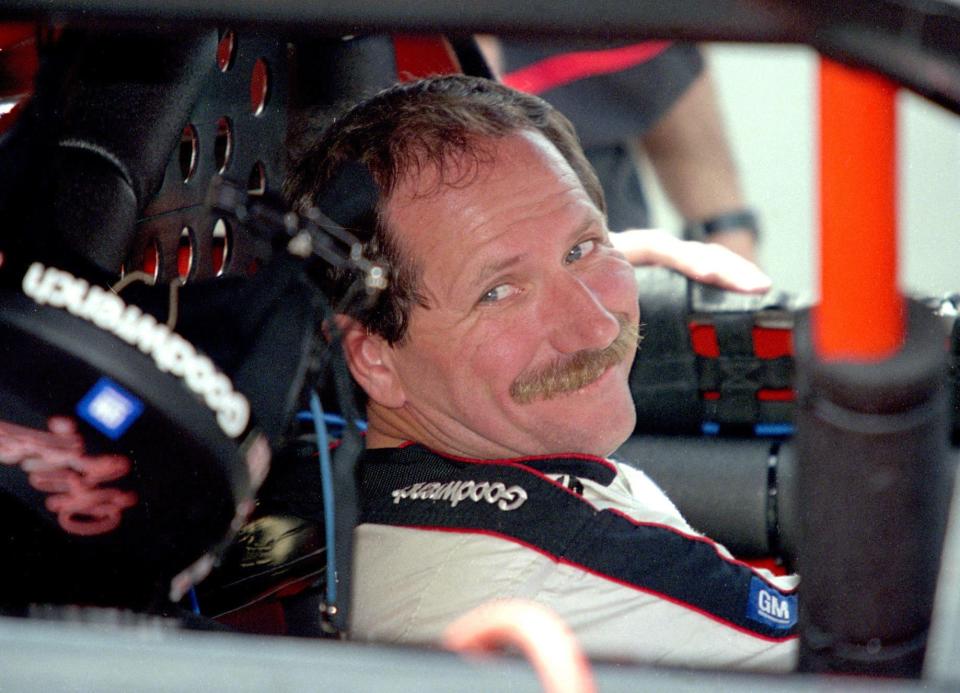
1. Dale's hometown is about 30 miles outside Charlotte, the longtime hub of North American stock-car racing.
2. Dale’s full name was Ralph Dale Earnhardt.
3. His father was Ralph, but Dale wasn’t a junior, because his dad was Ralph Lee Earnhardt.
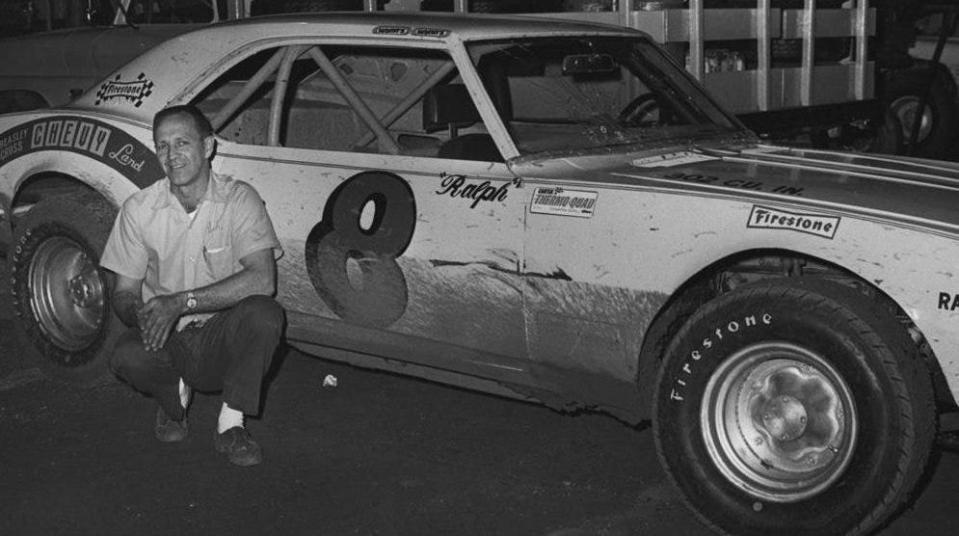
4. Ralph Dale Earnhardt Jr., however, is a different story. He’s known mostly as just Junior.
5. Dale’s dad Ralph was one of the first short-track racers of his era to quit work and go racing full-time. He raced throughout the Carolinas mostly, but also made 51 Cup Series starts between 1956-66.
6. Ralph Earnhardt posted 16 top-10s and six top-5s, including a runner-up finish to Speedy Thompson at Hickory in 1956, in his first-ever Cup start.
7. Dale’s mother was Martha, who died this past Christmas at age 91.
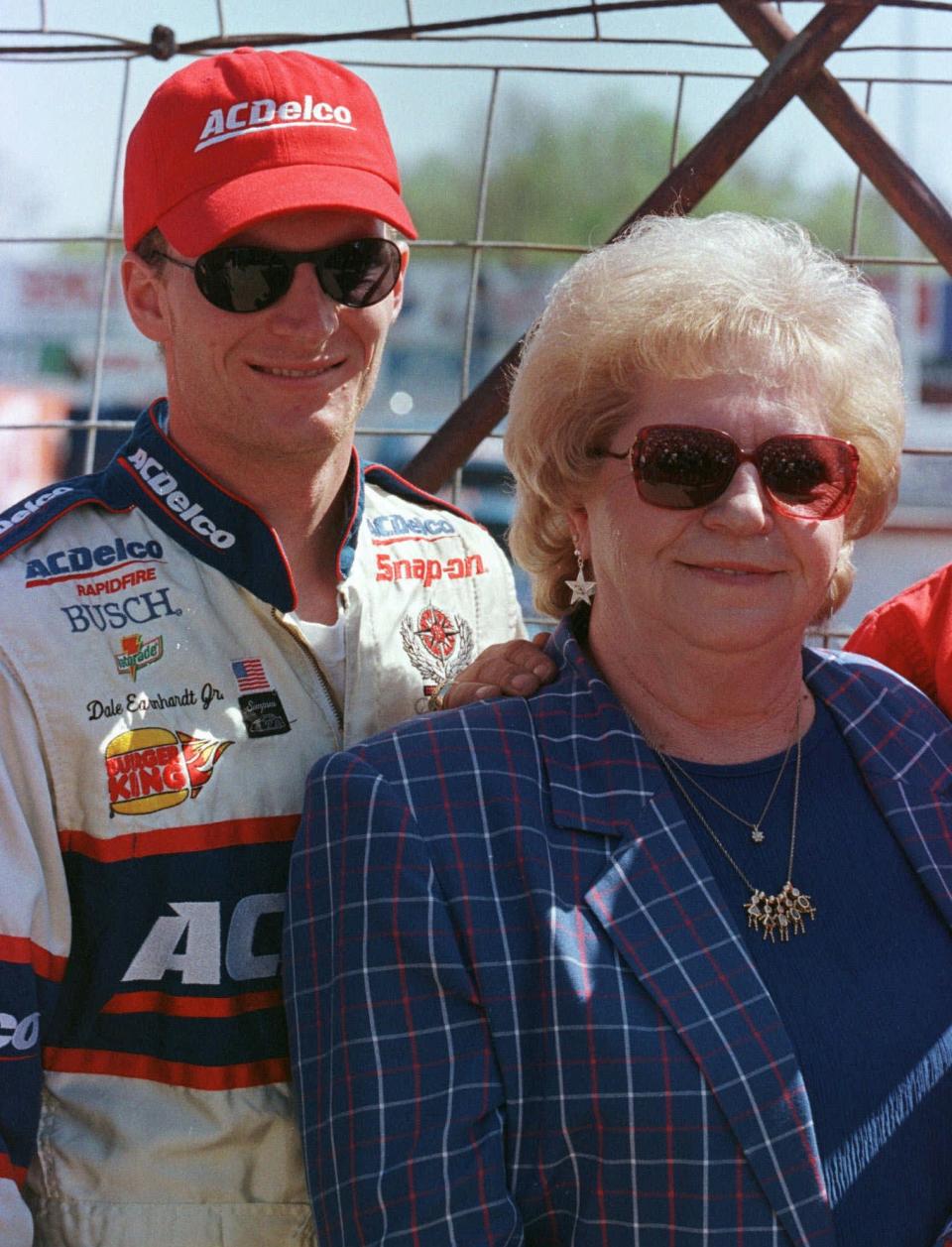
8. Dale had two brothers (Danny and Randy) and two sisters (Cathy and Kaye). Dale was the third born of the five.
9. Dale was 19 in 1970 when he started racing the local short tracks. His first car: A 1956 Ford Victoria.
10. One of the great ironies in the career of a man who’d become known worldwide as The Intimidator: That ’56 Ford was pink. A miscalculation in mixing colors caused that, and a lack of funds caused him to stick with the color instead of spending for a do-over.
11. Dale’s “Intimidator” nickname was born in 1987 as a result of his bruising battle with Bill Elliott during The Winston all-star race at Charlotte. That was the race featuring Earnhardt’s famed “Pass in the Grass” for the victory.
12. The “Pass in the Grass” wasn’t really a pass, however. Dale was in the lead down the frontstretch, got nudged by Elliott while blocking, darted down onto the grass but saved the car and returned to the asphalt while maintaining his lead.
13. From 2001-19, the Kannapolis minor-league franchise in the Carolina League was known as the Kannapolis Intimidators, in honor of the hometown hero, who’d purchased a share of the team after the 2000 season.
JUNIOR'S DAYTONA WIN: 20 years ago, Dale Earnhardt Jr. won Daytona's Pepsi 400 months after dad's tragic death
DALE'S RALLY: Remember when Dale Earnhardt passed 17 cars in five laps to win his final race at Talladega?
14. In 2002, a year after Earnhardt’s death, the Kannapolis Intimidators retired the No. 3 in honor of the fallen racer.
15. At 6-foot-1 and about 195 pounds, Dale was fairly average size by his generation’s standards, but today he’d be among the biggest NASCAR racers.
16. Dale had four kids. One (Kerry) with first wife Latane, two (Kelley and Dale Jr.) with second wife Brenda, one (Taylor Nicole) with third wife Teresa.
17. Kerry’s son Jeffrey is the lone Earnhardt racing regularly today in NASCAR.
18. Between 1975-79, Earnhardt ran nine Cup Series races for six different owners.
19. Dale’s first Cup race was the 1975 World 600 at Charlotte for car owner Ed Negre. He finished 45 laps off the pace but near the middle of the pack in 22nd place, one spot ahead of Richard Childress.
20. Dale earned $2,425 for that 22nd-place showing.
21. Lap 44 of the 1979 Daytona 500 was the first time Earnhardt officially led a Cup Series race.
22. Dale’s first full-time Cup Series team owner was Californian Rod Osterlund, and his crew chief was the legendary “Suitcase Jake” Elder.
23. Dale missed four races of his rookie season with a broken collarbone, suffered in a crash at Pocono. But he got his first win, at Bristol, finished seventh in points and was named Rookie of the Year in a class that included Terry Labonte and Harry Gant.
24. “Suitcase Jake” is credited with one of racing’s most famous quotes. After Earnhardt got his first win at Bristol, Elder told him, “Stick with me, kid, and we’ll both be wearing diamonds as big as horse turds.”
25. Elder reached yet again for his suitcase less than midway through the 1980 season, when he was replaced as Earnhardt’s crew chief by Doug Richert.
26. Earnhardt is credited with $42 million in Cup Series purse winnings over his career.
27. In 1980, Dale finished second at Riverside to open the season, then fourth at Daytona and was leading the points standings after that race. He held onto first place all year for the first of his seven championships.
28. After winning the Rookie of the Year and a championship in his first two seasons, Earnhardt’s other six championships would come on three separate back-to-back occasions.
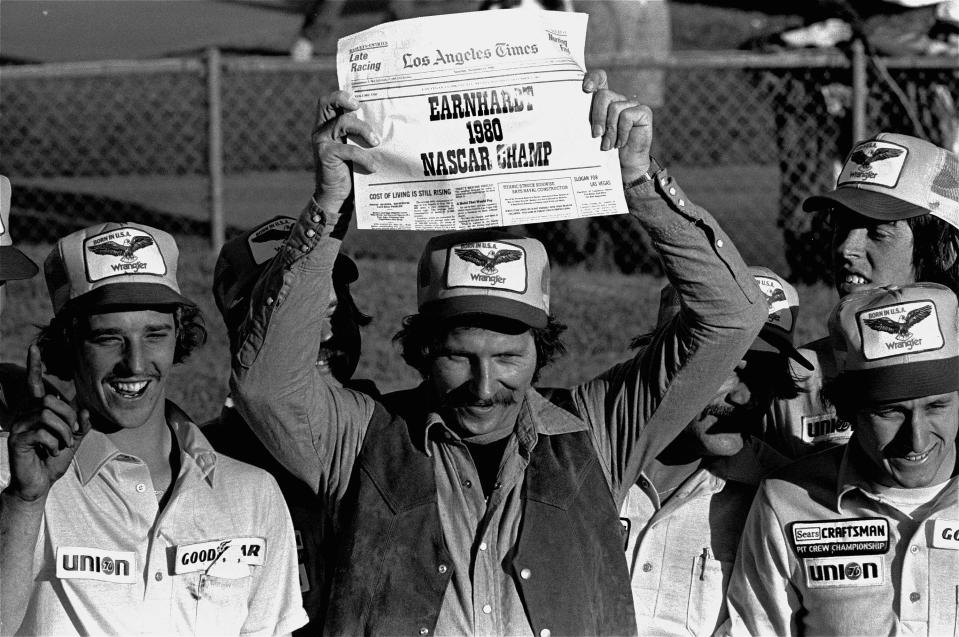
29. Dale ran two ARCA races in his career. He crashed out of a 1991 race in Topeka and finished fifth in a 1993 race in College Station, Texas.
30. In another moonlighting adventure, he won a 1983 NASCAR North Series race in Ontario, Canada, finishing a lap ahead of Randy LaJoie.
31. For a few years in the late-’80s and early-’90s, the NASCAR media guide switched Earnhardt’s birth year from 1951 to 1952. Early in ’91, his mother confirmed he was born in ’51, meaning he was approaching his 40th birthday instead of his 39th. He stuck by his 1952 claim but NASCAR ultimately, and rightly, of course, believed his mother and changed it back to the correct year.
32. By age 17, Dale had dropped out of high school to pursue his racing career, and also entered into his first marriage.
33. As a teenager, Dale would often drive an hour or so north to Ronda, N.C., where he’d watch Robert Yates work on engines in Junior Johnson’s race shop. He often left with spare or broken parts Yates could no longer use.
34. Ralph Earnhardt’s race shop was next to the family house, on Sedan Avenue in Kannapolis. Ralph was just 45 when he died of a heart attack at home.
35. Before quitting work to race full-time, Ralph built and tuned engines for a local garage owner named Berl Eddleman. It was said that all the serious bootleggers came to Eddleman’s shop for engine work.
36. Dale’s first-ever race trophy came while racing slot cars. Years later, long after he’d become a star, some boyhood friends (and old slot-car competitors) visited his house and he disappeared for a minute, returning with that 8-inch-high trophy.
37. Before going with Richard Childress Racing and Chevrolet for good in 1984, Earnhardt drove a variety of makes in NASCAR — Pontiac, Ford, Olds and, one time only, a Dodge, in his first career Cup race. It was sponsored by 10,000 RPM Speed Equipment.
38. The year after Earnhardt won his first Cup title, team owner Rod Osterlund sold his team in mid-season to J.D. Stacy. Earnhardt and Stacy split after a month and the driver finished that season driving for newly retired racer Richard Childress. He had six top-10s in those 11 starts with Childress, with a best of fourth at the season-ending race at Riverside.
39. Earnhardt’s first stint with Childress didn’t last past the end of the ’81 season. He spent the next two seasons driving No. 15 Fords for Bud Moore. He won three races for Moore, but was 12th and eighth in the standings those two seasons.
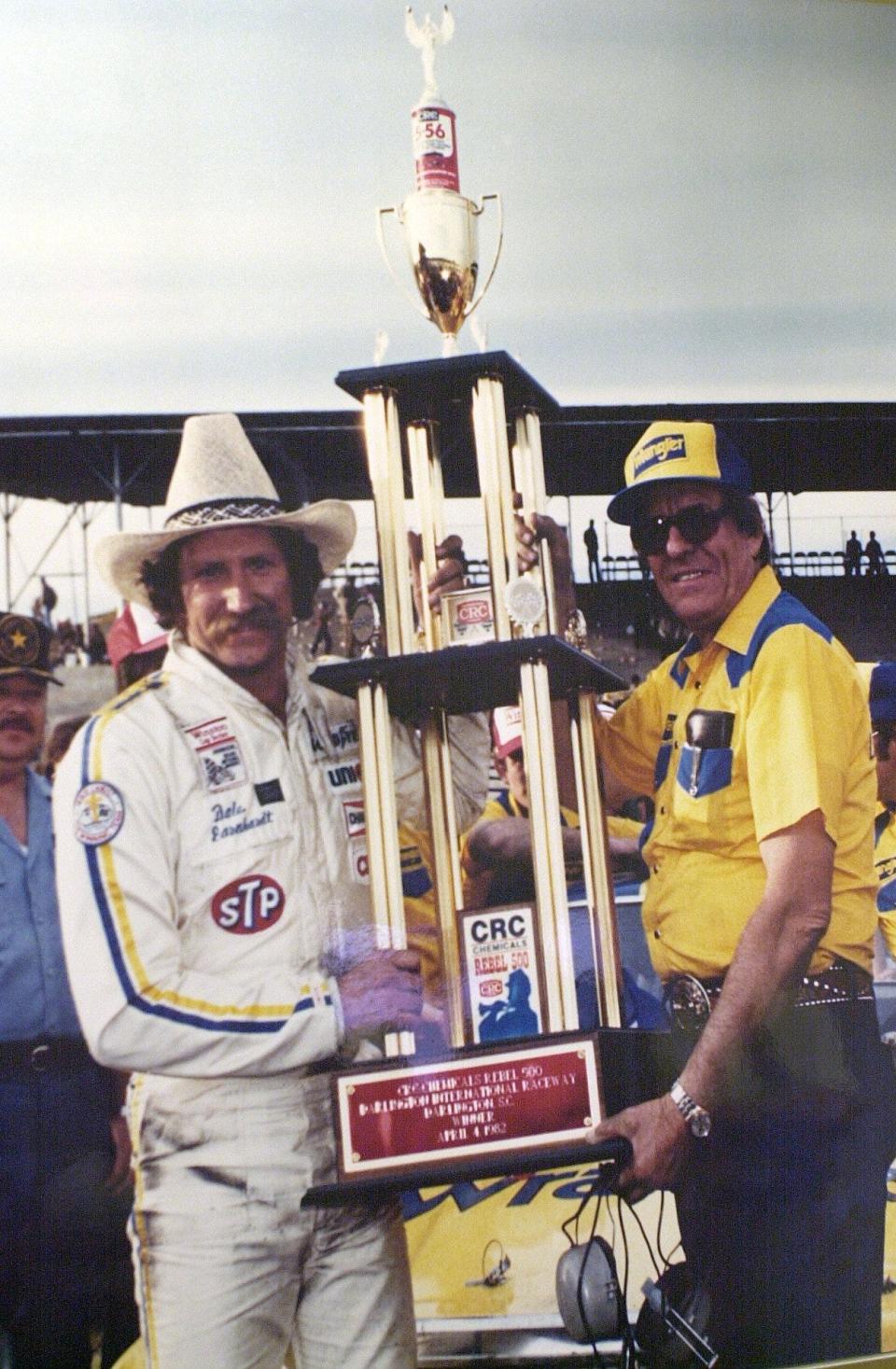
40. Dale reunited with Childress in 1984 and spent the rest of his career in a No. 3 Chevrolet.
41. A seemingly indispensable part of the Earnhardt “look” is the bushy mustache, but it got in the way once and off it went for a couple weeks. During an off-week snorkeling trip in 1999, his mask wouldn’t fit snug to his face because of the mustache, so it was briefly gone and he shocked the racing world by showing up the next weekend at the Brickyard clean-shaven.
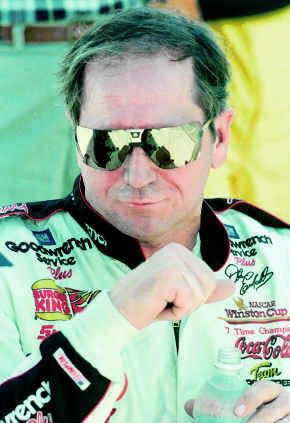
42. While wandering and wondering during midseason of 1981, old friend Robert Yates was building engines for DiGard Racing and tried convincing team owner Bill Gardner to talk to Earnhardt about taking over the No. 88 car the following year.
43. In Daytona Beach for the 1981 Firecracker 400, Earnhardt sat in a motel room at the Pirates Cove in Daytona Beach Shores. Gardner would never go meet with him. Years later, Yates recalled Gardner’s fateful words: “I don’t want no rough-looking guy like that driving my car.” The paths of DiGard and Dale Earnhardt diverged dramatically in the years ahead.
44. One of Earnhardt’s best friends was longtime Major League Baseball player and manager Ned Yost. During the 1994 baseball strike, Yost spent his down time on Earnhardt’s pit crew doing whatever odd jobs were needed. He was with the team late in '94 when Earnhardt clinched his seventh championship at Rockingham.
45. Dale was also friends with country duo Brooks and Dunn, and he appeared on the video to their 1997 hit, “Honky Tonk Truth.”
46. Earnhardt made an icon of the black No. 3 Chevrolet he drove starting in 1988, when GM Goodwrench became the primary sponsor for Childress Racing’s Cup Series team. But for seven full seasons prior to that, Dale carried the blue and yellow colors of Wrangler Jeans and won two championships in those colors. Three if you count 1980, when Wrangler came on board for the final race of the season.
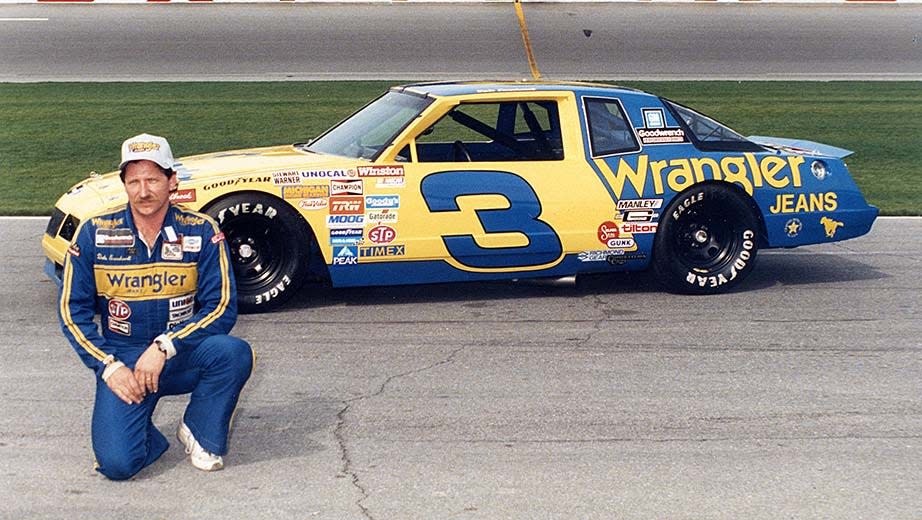
47. The 1987 season, Wrangler’s last as the No. 3 car’s sponsor, was Earnhardt’s best statistically. In a 29-race season, he had a career-high 11 wins, 21 top-5s and 24 top-10s. He won the championship by 489 points over Bill Elliott.
48. Earnhardt’s longest winless streak was 59 races. It began a month into the 1996 season but ended gloriously, with his long-awaited Daytona 500 victory to start the ’98 season.
49. Hunting and fishing weren’t just Dale’s two favorite hobbies, they were passions. Especially hunting. Do a web search for “Dale Earnhardt hunting stories,” and you can kill an afternoon.
50. As for his love of the water, Earnhardt had a large sport-fishing boat named “Intimidator.” When he died in 2001, he was a few weeks away from taking delivery of his new 100-foot Hatteras yacht named “Sunday Money,” which featured five staterooms and a Detroit Diesel engine.
51. Earnhardt won nine points-paying Cup races at three different tracks — Bristol, Atlanta and Darlington. He won 10 races at Talladega, including the 76th and final of his career, that comeback for the ages in 2000 when he went from 18th to first in the closing laps.
52. Of the tracks where he raced more than just a few times, he was only winless at Watkins Glen and New Hampshire. He was a combined 0-for-27 at those two venues.
53. In a combined 47 starts at the three road courses of his career — Riverside, Sonoma and Watkins Glen — Earnhardt had just one win, at Sonoma in ’95.
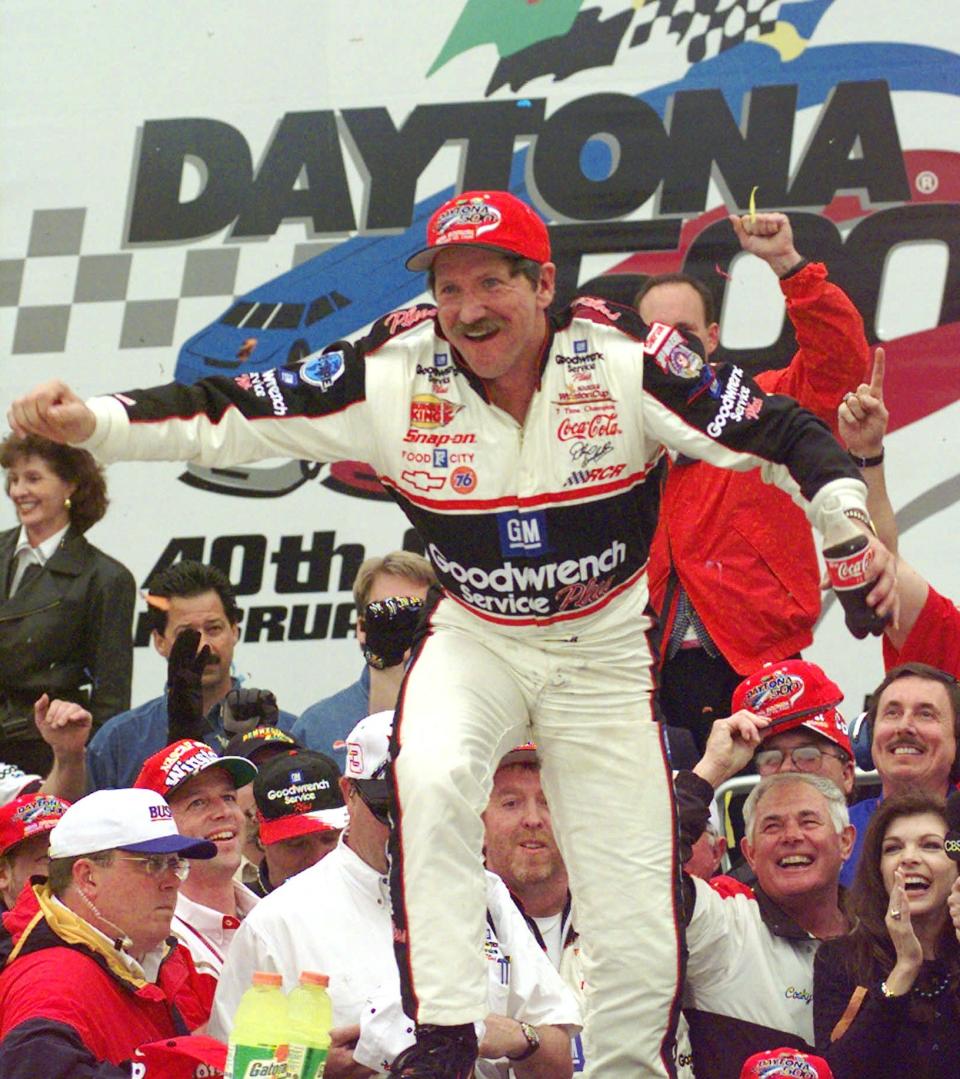
54. The official Cup Series record book shows three Earnhardt wins at Daytona — two in July and one in February. But everyone knows Daytona was his personal playground, where he won a total of 34 races covering Cup, the Busch Series, IROC, Busch Clash and the Thursday qualifying races.
55. His Daytona victory breakdown: One Daytona 500, two Firecracker 400s, seven Busch Series races, six IROCs, 12 Thursday qualifiers, six Busch Clashes.
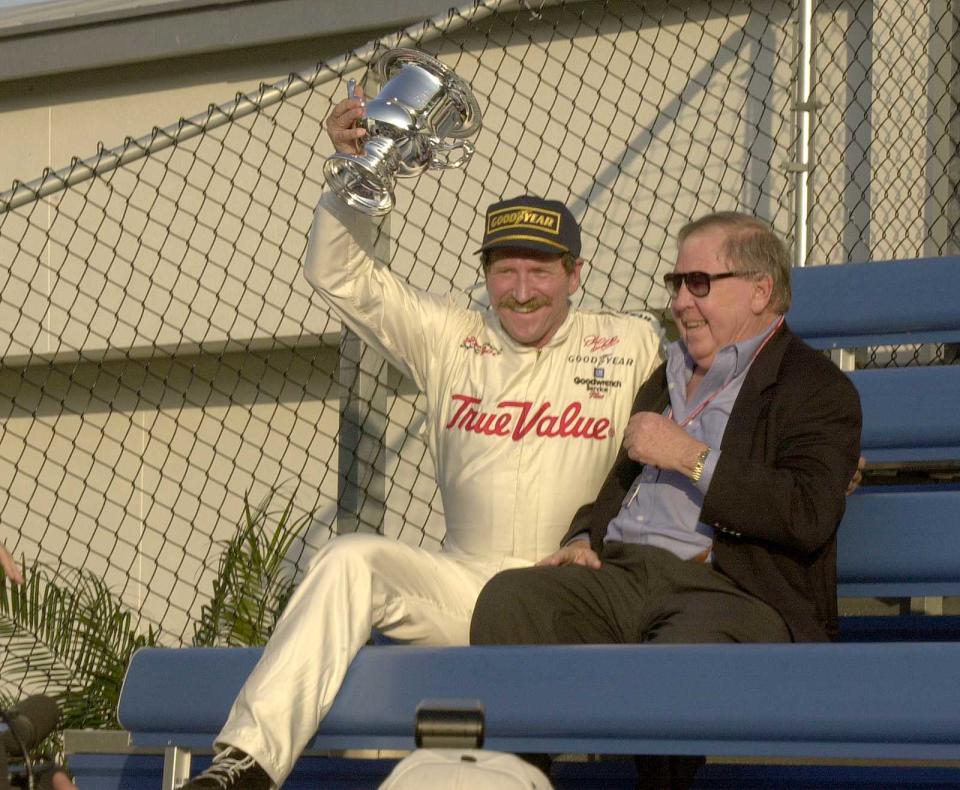
56. Of everything in the Earnhardt record book, some say his 10 straight wins in the Thursday Twin 125s — from 1990 through '99 — might be his most amazing feat.
57. Earnhardt wasn’t happy about that streak ending, by the way. At Daytona in 2000, the Fords had a big advantage over the Chevrolets, and overall the aero package led to lackluster back-and-forth on the track. Or, as Earnhardt explained on Thursday afternoon, “They've killed the racing at Daytona. They've taken the race out of the hands of the drivers and crews. It was a joke.”
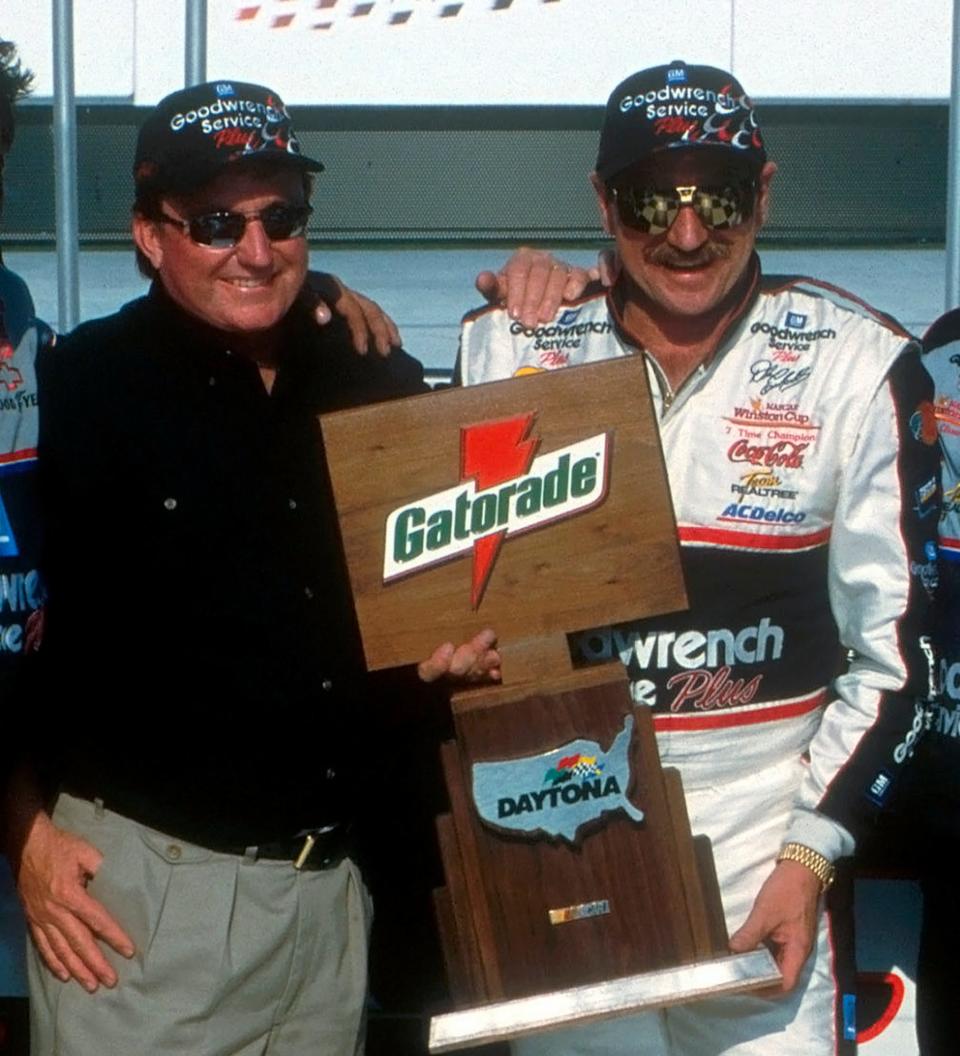
58. Speaking of streaks, the last five seasons Earnhardt drove a part-time Busch Series schedule (1990-94), he opened the year with a win in the Saturday 300-miler at Daytona.
59. For all his prowess at Daytona, Earnhardt wasn’t too concerned about pole day. He won three poles at Daytona — two for the 400 and one for the 500 — and didn’t win any of those races.
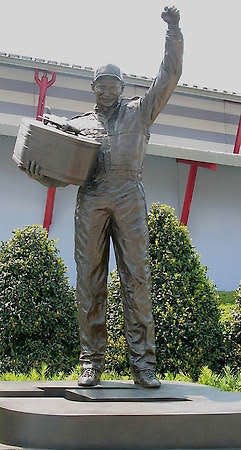
60. Three statues stand outside Daytona International Speedway. One of NASCAR founder Bill France Sr. along with his wife Anne. One of Bill France Jr. And one of Earnhardt. There’s also a statue of Earnhardt in his Kannapolis hometown.
61. Dale’s favorite adult beverage was vodka mixed with Five Alive orange juice.
62. Fans saw a very human side of Earnhardt in 1996, when he was replaced by relief driver Mike Skinner after six laps of the Brickyard 400. Earnhardt had broken his collarbone and sternum in a violent wreck the previous week at Talladega. Twice he waved off TV pit reporter Jerry Punch before composing himself. “Dadgum, it’s hard to get out of there, Jerry,” he said. “I mean, you know, it’s my life right here.”
63. One of Earnhardt’s early short-track team owners, Marshall Brooks, once explained Dale’s passion for racing: “I don't say this with any unkindness, but you'll find a lot of people who say they'll do whatever it takes to get into racing. But racing actually cost Dale Earnhardt two wives. He was so involved in racing, nothing else mattered.”
64. Earnhardt was such a dominant personality, it was common for half the grandstands to cheer him and half to boo him. After the 1999 night race at Bristol, the boos were much, much louder than the cheers. Earnhardt had wrecked Terry Labonte to take the lead and get the win in the closing laps. “I didn’t mean to turn him around,” Earnhardt said sheepishly in Victory Lane. “Meant to rattle his cage, though.”
65. Earnhardt’s on-track feuding with Geoff Bodine in the 1980s got so reckless and dangerous, the two were summoned to Daytona Beach, where Bill France Jr. convinced them to calm it down. “I ain’t never liked him and probably never will,” Dale said of Geoff. Years later the rivalry thawed, and the two bonded a bit over their mutual love of horses.
66. Earnhardt formed his own Busch Series race team — Dale Earnhardt Inc. — in 1984. It became a full-time team in the late-’90s and Dale Jr. won back-to-back championships under the family flag in 1998-99. Earnhardt started a part-time Cup team in 1996 and took it full-time two years later. He never drove for the team that remained in racing through 2008, when it was merged into Chip Ganassi Racing.
67. DEI had 24 Cup wins as an organization. The most (17) belonged to Dale Earnhardt Jr.
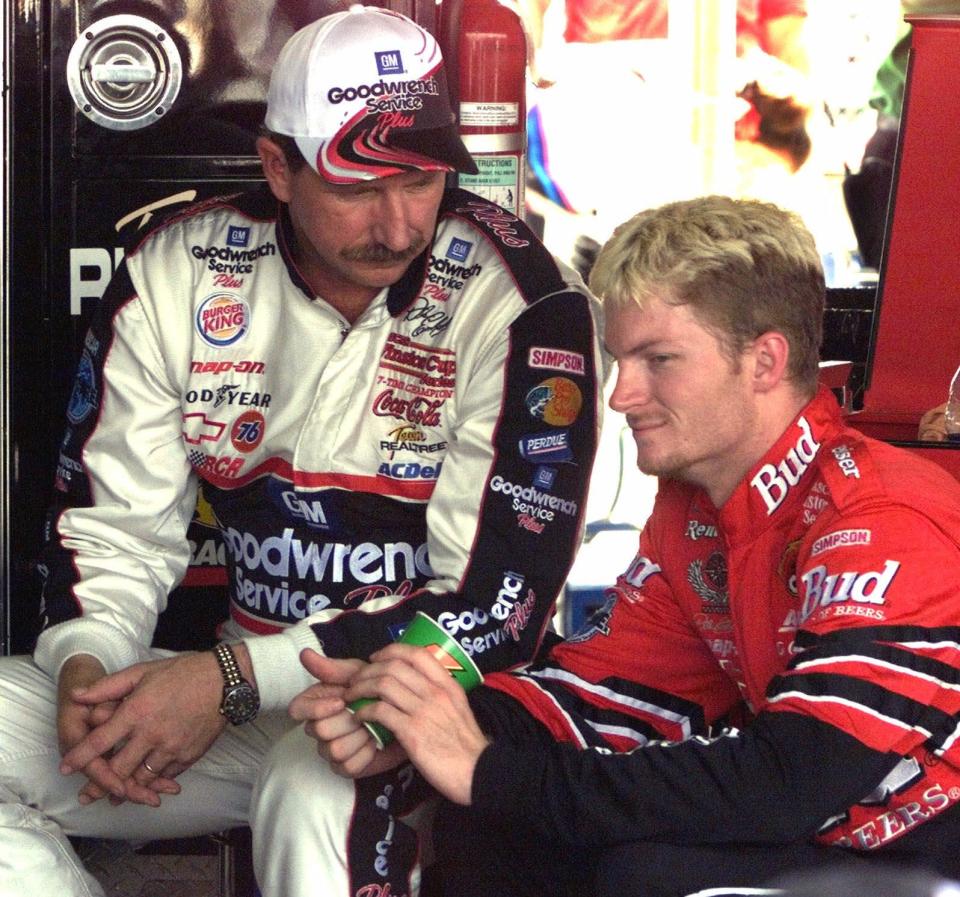
68. Danny Earnhardt, Dale’s youngest brother, is credited for convincing Dale that Junior, as a teenager, was worth a look as a driver. As a guest on Dale Jr.’s podcast, Danny recalled watching Junior for the first time, at Myrtle Beach, and calling Dale the next day and saying, “That boy can drive a race car.” Danny passed away last Dec. 10.
69. When Dale Earnhardt built the new DEI race shop and team headquarters in 1999, it was so modern and gilded, it was quickly dubbed the “Garage Mahal.” Today, it’s not only the home of the Dale Earnhardt Museum, but the sprawling facility serves as a special-event venue for corporate and private events. It’s in Mooresville, 14 miles from Earnhardt’s childhood home.
70. Earnhardt’s last Speedweeks at Daytona found the Intimidator in uncharted waters twice in pre-Daytona 500 events. First, he made his sports-car debut as part of Corvette’s two-car effort in the Rolex 24. He and Junior were part of the No. 3 team, but it was the Corvette’s No. 2 entry that won the race. The No. 3 finished fourth overall and second in class.

71. The other came during Friday’s IROC race, two days before the 500. On the 38th of 40 laps, he was broadsided by Indy-car racer Eddie Cheever and ended up in the grass, slipping and sliding toward the west banking. He kept it together and got back on the track without incident. Even race-winner Dale Jarrett was awed. “I can't tell you how incredible it is,” said Jarrett. “Dale Earnhardt, what a job. He showed why he's the greatest race-car driver in the world, right there.”
This article originally appeared on The Daytona Beach News-Journal: Dale Earnhardt: 71 memories on what would have been his 71st birthday

